Salema, Brachygenys califoriensis
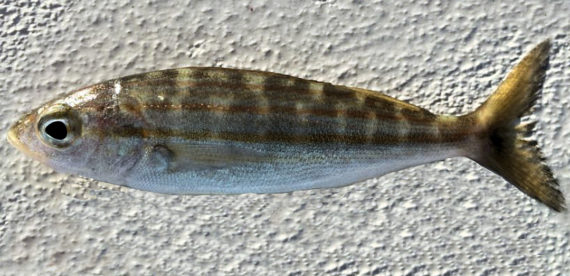 Salema, Brachygenys californiensis, Juvenile. Fish caught via a cast-net from coastal waters of Bahia de Los Angeles, Baja California, August 2016. Length: 10 cm (3.9 inches). Catch, photograph and identification courtesy of Chris Wheaton, Fullerton, California.
Salema, Brachygenys californiensis, Juvenile. Fish caught via a cast-net from coastal waters of Bahia de Los Angeles, Baja California, August 2016. Length: 10 cm (3.9 inches). Catch, photograph and identification courtesy of Chris Wheaton, Fullerton, California.
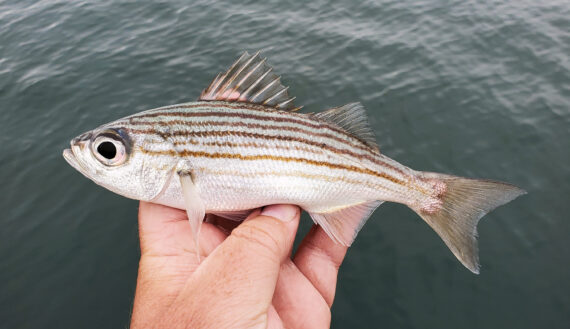 Salema, Brachygenys californiensis. Fish caught from within Mission Bay, San Diego, Ventura, California, July 2021. Length: 17 cm (6.7 inches). Catch, photograph and identification courtesy of Chris Moore, Peoria, Arizona.
Salema, Brachygenys californiensis. Fish caught from within Mission Bay, San Diego, Ventura, California, July 2021. Length: 17 cm (6.7 inches). Catch, photograph and identification courtesy of Chris Moore, Peoria, Arizona.
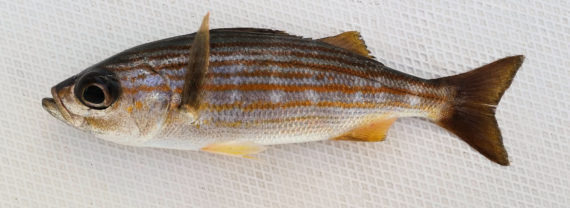 Salema, Brachygenys californiensis. Fish caught from coastal waters off Abreojos, Baja California Sur, May 2016. Length: 18 cm (7.1 inches). Catch, photograph and identification courtesy of Chris Wheaton, Fullerton, California.
Salema, Brachygenys californiensis. Fish caught from coastal waters off Abreojos, Baja California Sur, May 2016. Length: 18 cm (7.1 inches). Catch, photograph and identification courtesy of Chris Wheaton, Fullerton, California.
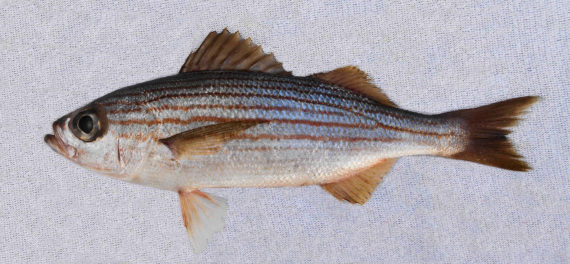
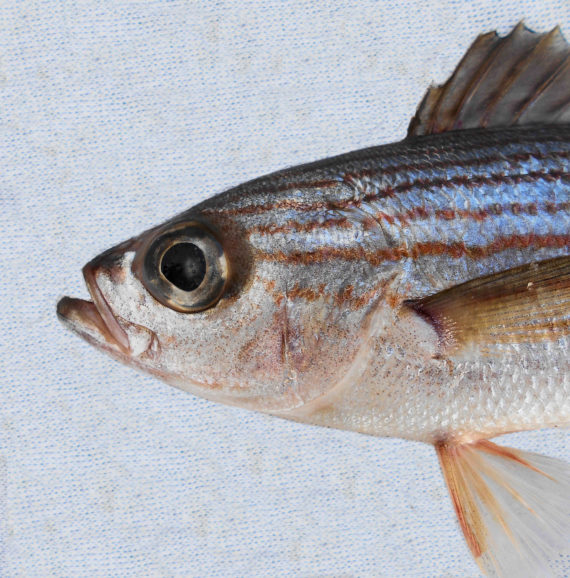 Salema, Brachygenys californiensis. Fish caught in coastal waters of Magdalena Bay, Baja California Sur, May 2018. Length: 21 cm (8.3 inches).
Salema, Brachygenys californiensis. Fish caught in coastal waters of Magdalena Bay, Baja California Sur, May 2018. Length: 21 cm (8.3 inches).
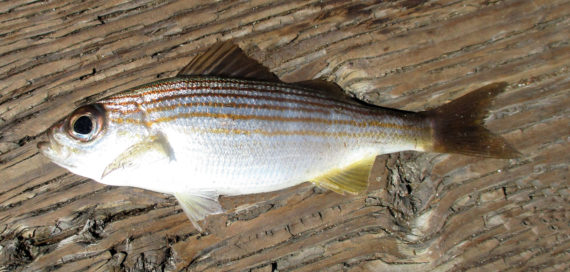 Salema, Brachygenys californiensis. Fish caught via hook and line off the Malibu Pier, Malibu, California, August 2019. Length: 21.5 cm (8.5 inches). Catch, photograph and identification courtesy of George Brinkman, Guelph, Ontario, Canada.
Salema, Brachygenys californiensis. Fish caught via hook and line off the Malibu Pier, Malibu, California, August 2019. Length: 21.5 cm (8.5 inches). Catch, photograph and identification courtesy of George Brinkman, Guelph, Ontario, Canada.
 Salema, Brachygenys californiensis. Fish caught within the Loreto Marina, Baja California Sur with a cast net, October 2024. Length: 35 cm (14 inches).
Salema, Brachygenys californiensis. Fish caught within the Loreto Marina, Baja California Sur with a cast net, October 2024. Length: 35 cm (14 inches).
 Salema, Brachygenys californiensis. Underwater photograph taken in coastal waters off La Jolla, California, September 2017. Photograph courtesy of Bob Hillis, Ivins, Utah.
Salema, Brachygenys californiensis. Underwater photograph taken in coastal waters off La Jolla, California, September 2017. Photograph courtesy of Bob Hillis, Ivins, Utah.
The Salema, Brachygenys californiensis, is a member of the Short-snout Grunt or Haemulinae Sub-family of the Haemulidae Family of Grunts, and also known as the California Salema and in Mexico as salema. Globally, there are twenty-one species in the genus Haemulon, and all twenty-one are found in Mexican waters, fourteen in the Atlantic and seven in the Pacific Ocean. This fish was very recently reclassified from the Haemulon Genus and put into the Brachygenys Genus and the Haemulinae Sub-family of Short-snout Grunts.
The Salema has an elongated thin body with a depth that is 25% to 29% of standard length. They have an overall silvery appearance with 6 to 8 orange-brown stripes on the upper two-thirds of their body; these stripes increase in number with maturity. They have large eyes and an oblique mouth with a projecting lower jaw. Their anal fin has 3 spines and 11 or 12 rays; their caudal fin is slightly forked; their first dorsal fin has 12 spines; their second dorsal fin has 12 to 14 spines; and, pectoral fin are short. The spine base of their dorsal fin is longer than the base of the rayous part, a key to identification, and the anal rays match the second dorsal fin. They are covered with scales. They have a lateral line that follows one of their stripes.
The Salema is an inshore schooling species that is found near reefs or high in kelp forests at depths up to 40 m (130 feet). They reach a maximum of 35 cm (13.8 inches) in length, established by the fish photographed above, and less than 1.0 kg (2 lbs 3 oz) in weight. They feed at night on plankton. The Salema is poorly studied with very limited information available about their lifestyle and behavioral patterns including specific details on age, growth, longevity, movement patterns, diet, habitat use, and reproduction.
The Salema is a resident of all Mexican waters of the Pacific Ocean.
The Salema can be easily confused with the Longfin Salema, Xenichthys xanti (spinous part of dorsal fin shorter than base of rayous part; black spot at tail base), the Wavyline Grunt, Microlepidotus inornatus (narrow orange stripes covering body), and the Yelloweye Croaker, Odontoscion xanthops (rounded tail).
From a conservation perspective the Salema is currently considered to be of Least Concern with stable, widely distributed populations. They are small in stature and of limited interest to most except they are retained by subsistence fishermen.